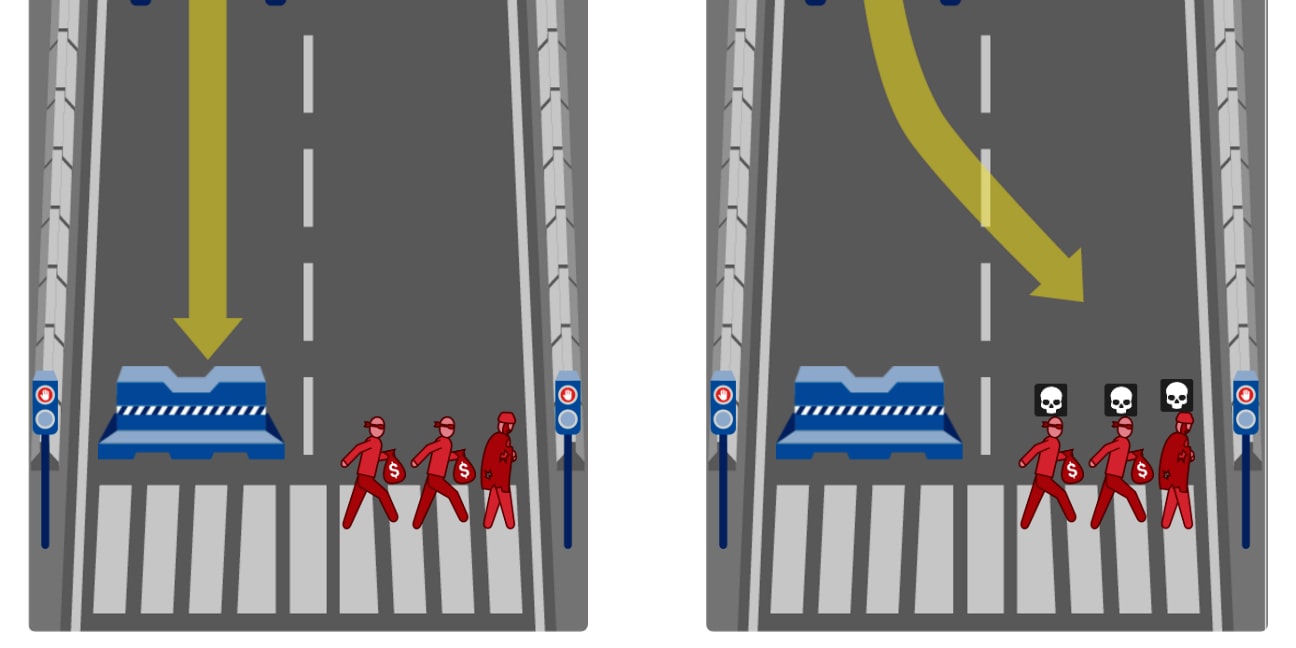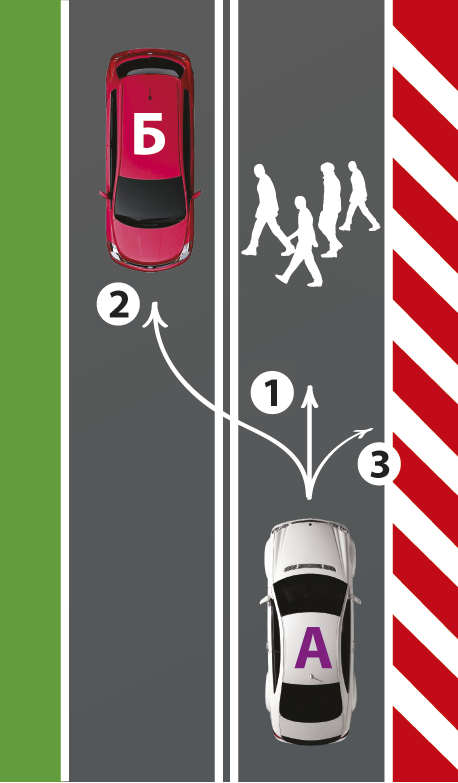Mercedes-Benz: for an autonomous car, driver life is paramount

Autonomous vehicles, according to experts, can become a familiar part of our everyday life after 5 years. Right now, the launch of mass production of cars of this type for consumers is impossible for several reasons. One of them is the imperfection of technology. The computer control system cannot yet respond to difficult situations on the road as it should, so driver safety is in question.
In addition, there are a number of important ethical issues. One of them even got its own name - “trolley problem”. What should an electric car do if a situation arises when it is necessary either to endanger the life of the driver (having moved into a ditch, crashed into a tree, etc.), or to save the driver, but run into a person? But what if there is not one person in front, but several, and these are children? In fact, there are more than one such questions, and the automakers did not give a clear answer to the raised question. Cognitive Technologies, which is now developing an automatic control system for KAMAZ
, is considering several situations related to the “trolley problem” . Among others, two such situations:
1. An unmanned vehicle moves at a speed of approximately 80 km / h. Suddenly a dog appears in front of him on the road. What should the automatic control system do, knowing that there is simply no point in braking now? Continue straight ahead by crushing the dog; to break the rules, changing lanes into the oncoming lane with exit through the double continuous marking line or move to the ditch? The last two decisions are highly likely to lead to damage to the car, and can also threaten the health or even the life of the driver. (Fig. 1)
2. An unmanned vehicle moves at a speed of approximately 80 km / h. Suddenly, several people appear on the road in front of him. What should the automatic control system do, knowing that there is simply no point in braking now? Continue moving in a straight line, knocking people down, breaking the rules, changing to the oncoming lane with an exit through a double continuous marking line or moving to a ditch? The last two decisions are highly likely to lead to damage to the car, and can also threaten the health or even the life of the driver. (Fig. 2)
 Fig. 1 Fig. 1 |  Fig. 2 Fig. 2 |
To solve both situations is very difficult, if at all possible, because in both cases, someone will suffer. According to Mercedes-Benz, the automatic vehicle control system should, first of all, worry about the life of the driver. The company's experts believe that a computer with a high degree of probability can save the life of the driver. But can he save the life of other people who have come out on the road? This is impossible to predict.
“You can donate a car. Yes, you can do it, but nobody knows what will happen to the people you originally saved, such situations are always very difficult. Therefore, a system must save someone it can save, ”said Christoph von Hugo, Head of Autonomous Control Systems, Mercedes-Benz. “If you know that you can save a single person, then save him. Save the one in the car. ”
Hugo admits that this is a complex issue that needs to be discussed. Computer-based vehicle control systems should be able to respond to different situations faster and more fully than a person can do. At the same time, the company believes that with such a system the destruction of the car should not be the first solution to the problem.
“It's a matter of ethics who to save. 99% of the work of engineers is devoted to how to avoid emergency situations. We are working to ensure that our cars do not end up in situations where complex ethical decisions need to be made, ”Hugo said.
It is not yet clear how regulators in Germany and other countries will react if Mercedes-Benz decides that the robomobile must first save the driver’s life, not taking into account the lives of other people. By the way, in this country Tesla has already been asked not to call its computer driver assistance system “autopilot”.
But work in this direction is already underway. The German authorities in the person of the Minister of Transport Alexander Dobrindt (Alexander Dobrindt) proposed three "rules for the robot":
1.It is clear that material damage always takes precedence over a threat to human health;
2. People cannot be distinguished by age, size and other characteristics (that is, for a computer system, all people have the same status);
3. If something happens, then the manufacturer is responsible.
The Minister of Transport also initiated the creation of an ethics commission that develops specific provisions for traffic rules for cars with an automatic control system. The three rules listed above became the basis for the development of the entire set of rules for robomobiles.
In addition, the German authorities consider it necessary to place a "black box" in robomobiles. Such a system will record all vehicle motion parameters. Will be recorded and who drives the car at any given moment - a computer system or a person. In the event of an accident, the Black Box will help to understand whether a person followed the recommendations of the on-board computer or acted at his own risk.
Most likely, drivers will be banned from sleeping in any type of robomobile, but the book can be read. It is also proposed to allow telephone calls and other actions of the driver when the car is controlled by a computer system. True, these proposals are still being considered by the authorities of both Germany and other countries, for example , Great Britain.
According to some experts in artificial intelligence, a computer-based car control system with the possibility of training will be more effective. For example, Stuart Armstrong believes that such systems can work much better than those systems where the rules are hard-coded in the PC memory without the possibility of modification.
